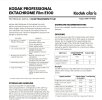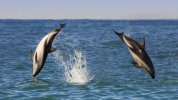Thanks. Without being obnoxious - i am a stills expert - just trying to translate over to video skills.
a bit about me.
Nothing obnoxious about asking questions. Also, nothing to be embarrassed about if you don't know.
You may get some answers that are unresponsive and fail to inform, however.
Because exposure conditions can change enormously very quickly while shooting video, some exposure automation is necessary in most circumstances to get usable footage. Especially a moving camera that can go from open sunlight to much darker shade.
It's a judgement call. If the shooting conditions allow it, try to used fixed ISO and shutter when you can. This produces the most uniform results. Good example of an scene like that is following a water skiier, or a boat – with the sun staying in the same place in the sky.
The exact opposite is following a mountain biker through woods and meadows. In the latter, I try to used the lowest fixed ISO that keeps shutter fast enough to avoid unwanted blurring, at the same time avoid blowing out highlights, which usually means underexposed a little (EV set to -0.3 to -1.0). Shoot in dlog, pull the detail in the shadows out in post.
The idea is to fix ISO to minimize noise in dark portions of the footage. Sometimes there's no way to properly expose the entire mission other than full auto. Example is flying from bright sun through an opening into an unlit, dark motif interior, like an old wooden barn through open barn doors. Shutter speed just goes to long and some increased ISO is necessary. Really good videographers can put ISO on the adjustment dial, and tune it through such transitions. Not me – I always forget, being too focused on the flying, usually

If you have a variable aperture, it gets a little more complicated, but the same principles apply. In that case, consider if depth of field matters in selecting which variables to fix, and which to let float.












